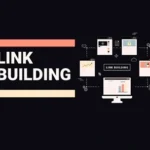Remote work has moved from being a rare perk to a daily reality for millions. Teams spread across time zones now share projects, deadlines, and daily challenges without ever stepping into the same room. This shift has opened up new ways of working, but it has also made managing people more complex.
When your team is scattered, you can’t just drop by someone’s desk for a quick check-in. You rely on updates, emails, and the occasional video call. That’s not always enough to keep things moving at the right pace.
That’s why many companies are looking at smarter tools to bridge the distance.

Why Businesses Choose Remote Staff Monitoring Software Solutions
For managers, staying connected without being overbearing is a tricky balance. This is where remote staff monitoring software solutions come in. These platforms give leaders a clear view of what’s happening without hovering over employees’ shoulders.
The best systems offer visibility, not surveillance. They give managers the data they need to make better calls while giving staff the breathing room to work without constant interruptions. It’s about trust and accountability working side by side.
Real-Time Activity Tracking
One of the most valuable features is real-time activity tracking. It lets you see which apps or tools are being used and when.
This means if a task is stuck, you can figure out if it’s waiting on approvals, missing files, or technical fixes. Instead of chasing vague updates, you can act quickly on the actual issue.
Even better, these insights often reveal hidden productivity patterns — like the hours when certain team members do their best work. That’s information you can actually use.
Detailed Time Reports
Accurate time reports tell a story numbers alone can’t. They show how much effort each part of a project takes.
Maybe a design stage is eating up twice as many hours as planned. That’s a sign to tweak the process or bring in extra help. Without these reports, you’re relying on guesswork.
Time data can also help with client billing, project quotes, and forecasting. It’s not just about tracking hours — it’s about understanding how your business runs day to day.
Integration With Other Tools
Switching between multiple platforms all day slows people down. That’s why integration is a big deal.
The top monitoring tools connect with project management boards, messaging apps, and file storage systems. Everything you need lives in one place, which cuts down on confusion. You can go from a time report to a project update without juggling five tabs.
It’s a small change that can save hours each week.
Security and Data Protection
Remote setups can create weak points for hackers. A public café Wi-Fi connection or an outdated personal laptop can leave sensitive data exposed.
Monitoring software with built-in security features closes those gaps. Look for end-to-end encryption, secure logins, and instant alerts if something suspicious pops up.
If your business handles confidential information, this isn’t optional — it’s non-negotiable.
Customizable Permissions and Privacy Controls
Monitoring shouldn’t feel invasive. The best systems let you set different permission levels for different roles.
For example, you might track certain activities for project contractors but not for senior managers. You can monitor what’s necessary while still protecting personal boundaries. This keeps morale high and avoids unnecessary tension between teams.
Transparency here is key. When everyone knows what’s being tracked and why, they’re more likely to see the system as a support tool instead of a threat.
User-Friendly Interface
A powerful tool loses its value if no one can figure it out. That’s why the interface matters.
Look for a platform with clear navigation, simple report layouts, and easy access to the most-used features. Managers should be able to pull a report in seconds. Employees should be able to check their own data without a training session.
If it’s easy to use, your team is way more likely to actually use it.

Scalability for Growing Teams
Today you might have a dozen remote employees. In a year, it could be twice that number. If your software can’t keep up, you’ll be forced to switch systems just when you’re hitting your stride.
Scalable platforms handle more users, more projects, and more data without a performance drop. Picking one now saves you headaches later — and keeps your processes consistent as you grow.
Wrapping Up
Software for monitoring remote employees has now become a main component in managing teams today. It assists in keeping the work progressing, guarantees security and provides leaders with necessary understanding to make intelligent choices. The most effective tools are those which can track activities as they happen, create straightforward time reports, integrate well with your current systems and safeguard confidential information. They adjust to various roles, provide easy-to-use dashboards and expand as your business develops.
Picking the correct remote staff monitoring software is not just a technology choice. It is like putting money into how your team collaborates. With suitable features, you can set up a distant working environment that is efficient, safe and based on trust.
When distance no longer gets in the way of teamwork, you know you’ve chosen well.

